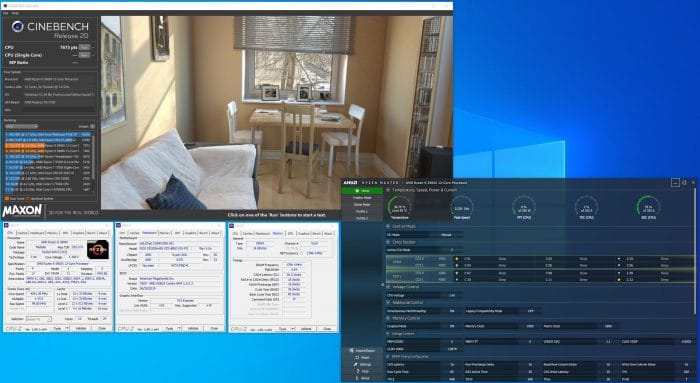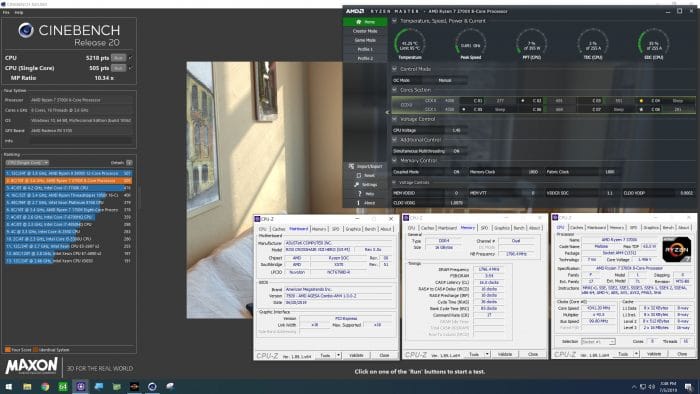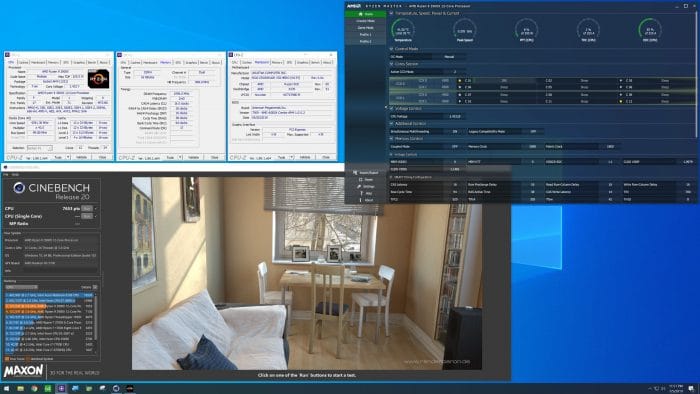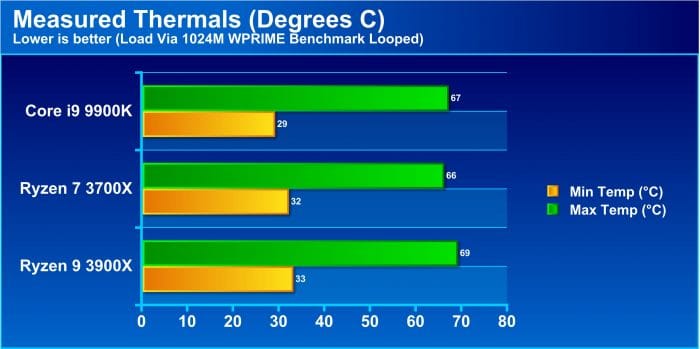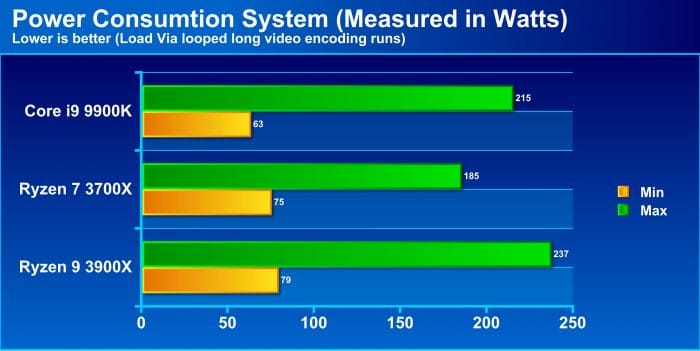Overclocking
Overclocking AMD ZEN based chips have always been a dance between set it and go, and massive frustration trying to figure out what you didn’t set and why is it not working. Well with Ryzen 3000 I must say the overclocks are not monstrous by any means as both of our chips topped at 4350 for the 3700X and 4300 for the 3900X. But, the overclocks were not very difficult as AMD has created special UEFI pages that every board will have and it will house all of AMDs chosen important overclocking settings.
First up is the Ryzen 9 3900X which I was able to get a solid 3300MHz all core overclock. This gave the Cinebench R20 nT test a nice boost form the stock 7215 to the overclocked run of 7673. The 4300MHz overclock was achieved with 1.45VCore and LLC level 4.
Next up is the 3700X which we were able to get up to 4350MHz which was achieved with 1.45VCore and LLC Level 4 again. This resulted in a Cinebench R20 nT result of 5218 which is a nice jump above the stock run of 4972.
Lastly, we wanted to test the memory overclock capability of the touted new Ryzen IMC. I pulled out some GALAX OC LAB DIMMs based on some good B-Die and we settled in with the 3900X at 4300MHz again and memory we were able to get to 4000MHz at 16-16-16-38 1T at 1.45VDIMM. The memory actually got up to 4333MHz CL18-18-18-40 1T at 1.5VDIMM which is about where these DIMMS stop posting on every platform I have tested them on thus far, so I dialed them in and went for a more sustainable result with lower VDIMM. I must say, this was on AIR DIMMS and I am very interested to see as the platform matures what overclockers can do when they get the IMC cold.
While overclocking is fun and can help our multi-core performance, the stock GPU boost works really well and you don’t lose the single threaded performance when it can boost to 4.6GHz+. I know I’m getting old, but I’m not tired of overclocking, I just think most users will be happy with the snappy response of the system as it runs, or maybe toy with Precision boost since that will still work like the stock auto overclocking but to a higher level than the stock boost clocks.
Temperatures
For Thermals, we let the system sit idle until temps bottomed out. Then we ran loops of Wprime benchmark to see where we topped out.
We test with real-world tests rather than extreme stability tests which can be seen as a power virus in nature or overstress components causing them to potentially fail. The Alphacool Eisbaer LT did a great job keeping all three of the chips well within margin, but do keep in mind that the AMD chip is a bit harder to judge due to the weird way it measures thermal diodes and the fact that its boost algorithm causes regular spikes in temps so I kept an eye for where the normalized temps settled into. the 3900X had the highest average temperature over the runs and I’m not really surprised as it has 50% more processing cores than the other two 8-core CPUs.
Power Consumption
The power consumption was interesting as I had forgotten how much power an 9900K pulls. and more importantly how little these new Ryzen 3000 series chips need.
Here we see the highest power user being, of course, the 12 core. I know the 3700X is a low power part and the chart verifies that but the performance we have seen which regularly beats the 9900K really surprises me as normal convention would be that if you are getting more power (performance) you use more power (electricity). Also, I’m not sure if its initial BIOS tuning or if the Ryzen parts simply pull more power at idle, but I will see if this improves over time as both chips pulled 12 – 16 watts more at idle just sitting at the desktop. I guess it could be the Chipset as I know the X570 requires active cooling, so maybe that pulls a bit more than the Z3790 we are testing against.
Now, let’s wrap this one up as the trains pulling into the station.. and the NDA is up in less than 24 hours so its time for this to meet all of you!
 Bjorn3D.com Bjorn3d.com – Satisfying Your Daily Tech Cravings Since 1996
Bjorn3D.com Bjorn3d.com – Satisfying Your Daily Tech Cravings Since 1996


